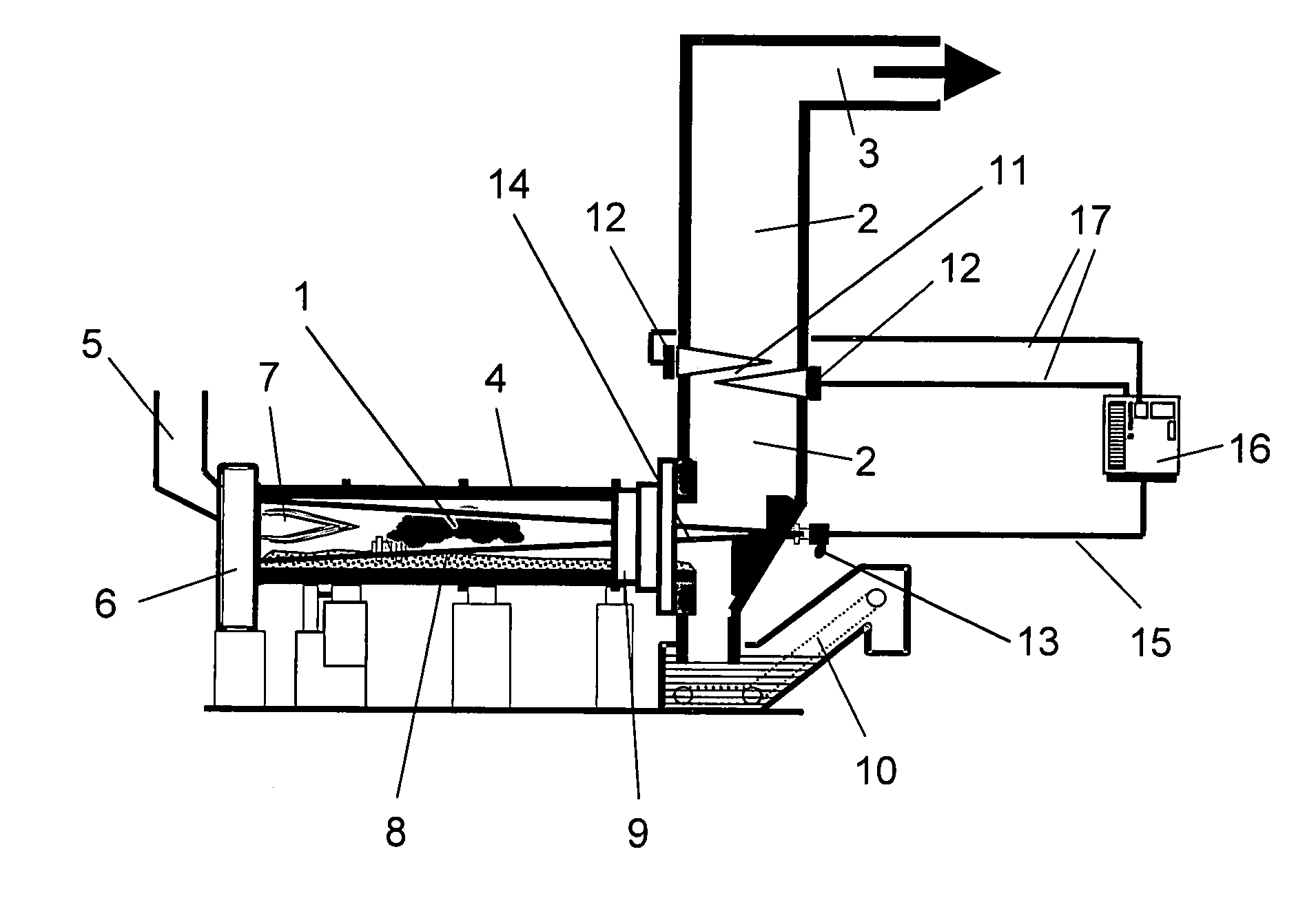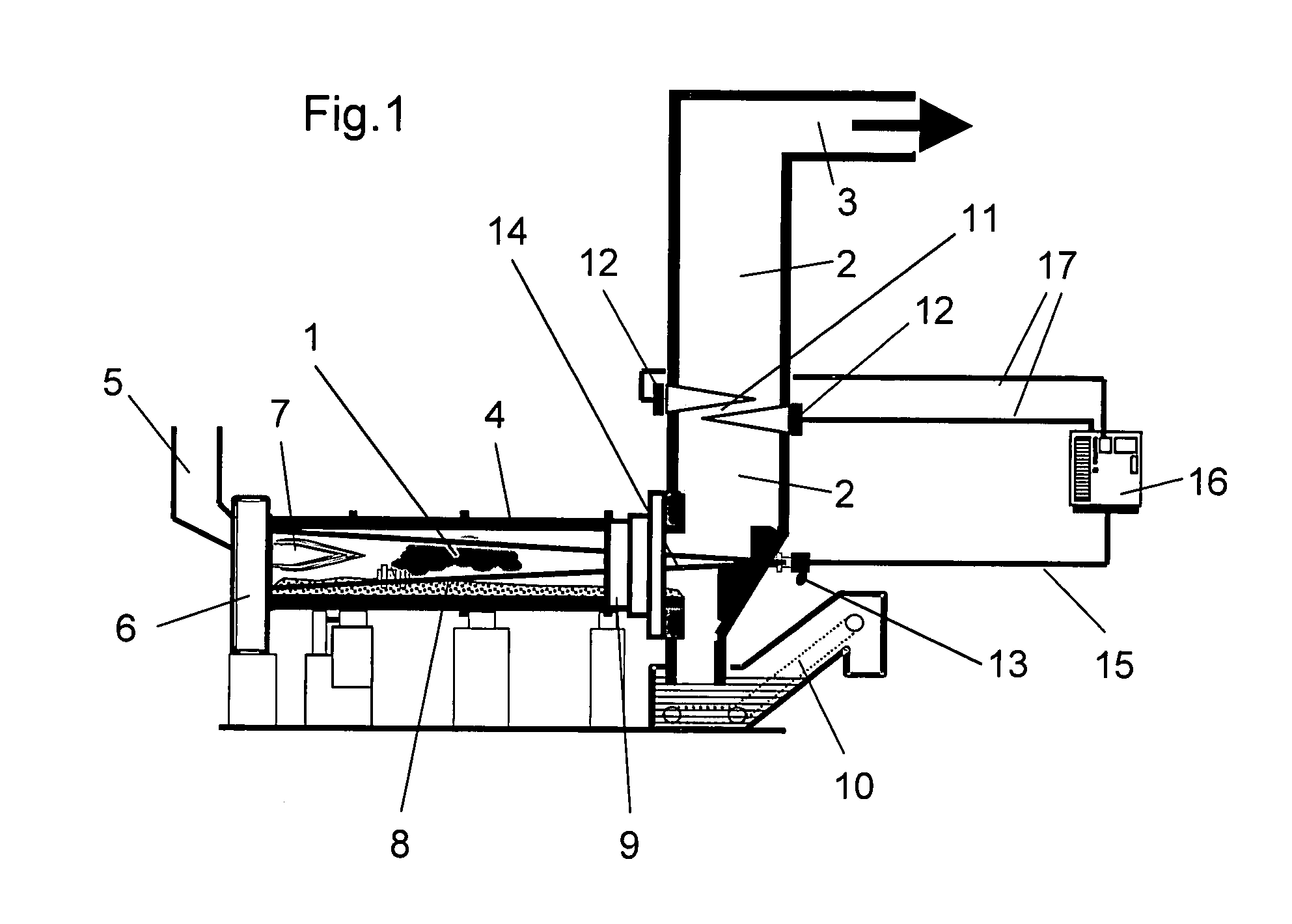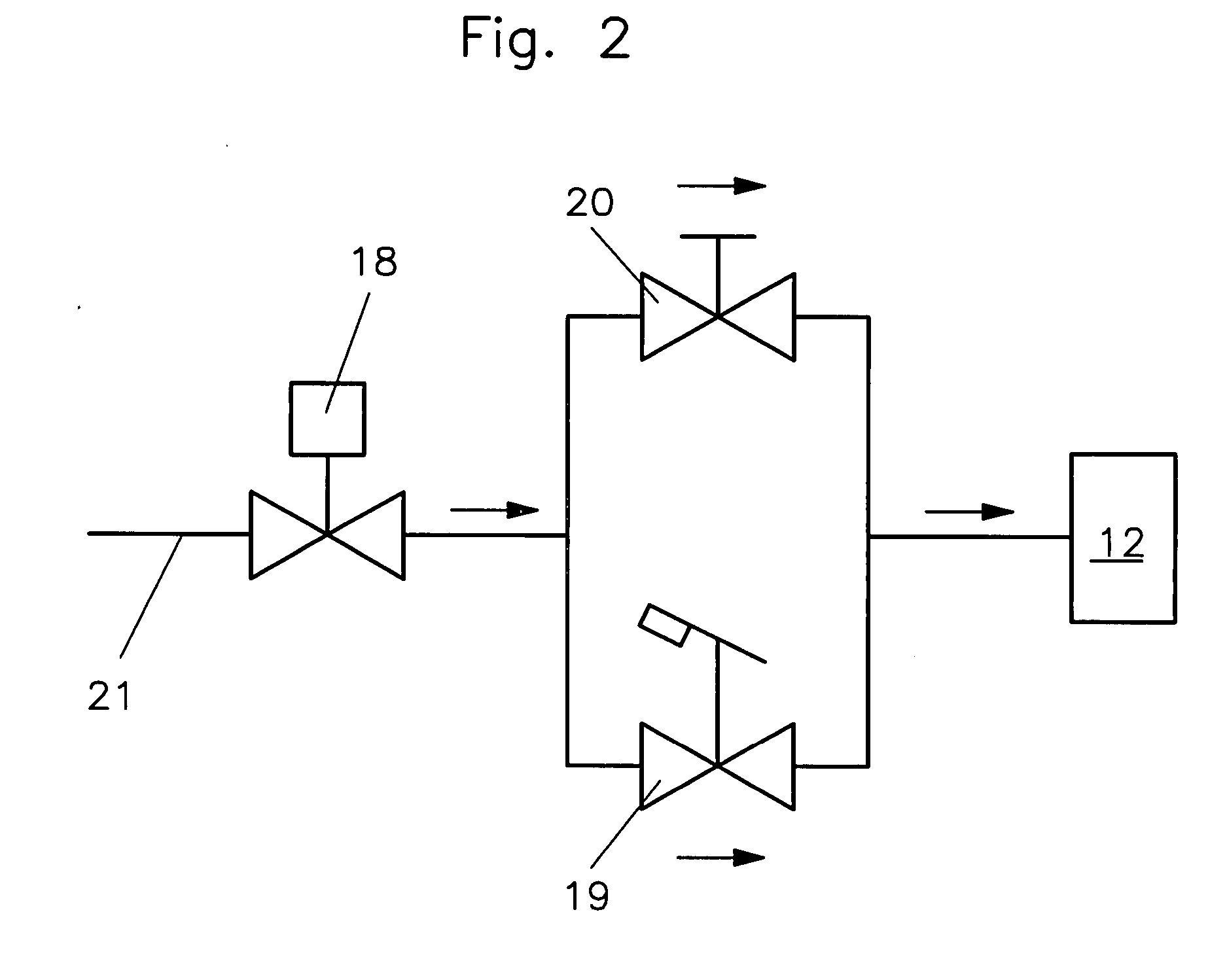Method for increasing the throughput of packages in rotary tubular kiln apparatus
- Summary
- Abstract
- Description
- Claims
- Application Information
AI Technical Summary
Benefits of technology
Problems solved by technology
Method used
Image
Examples
examples
[0035] Based on an actual operation of the experimental plant THERESA, a reduction of CO peaks during package combustion in the rotary tube was achieved. The operational settings for the combustion chamber (rotary tube) and the post combustion chamber were the same in both experiments (Heating oil flow: 120 kg / h; combustion air flow 2200 Nm3 / h; package throughput: 30 / h each including 1 liter heating oil EL). FIG. 3a to 3d show the result in diagrams with the same time window (running time), wherein FIGS. 3a and 3b show the result in diagrams with the same time window (running time), wherein FIGS. 3a and 3b show the results without, and FIGS. 3c and 3d show the results with, the control of the combustion process in accordance with the invention.
[0036]FIGS. 3a and 3c are directly comparable (measuring range and resolution). They show the CO concentration curve 22 in the purified gas in the chimney with the introduction into the combustion chamber of 1.0 liter packages of heating oil ...
PUM
 Login to View More
Login to View More Abstract
Description
Claims
Application Information
 Login to View More
Login to View More - R&D
- Intellectual Property
- Life Sciences
- Materials
- Tech Scout
- Unparalleled Data Quality
- Higher Quality Content
- 60% Fewer Hallucinations
Browse by: Latest US Patents, China's latest patents, Technical Efficacy Thesaurus, Application Domain, Technology Topic, Popular Technical Reports.
© 2025 PatSnap. All rights reserved.Legal|Privacy policy|Modern Slavery Act Transparency Statement|Sitemap|About US| Contact US: help@patsnap.com



